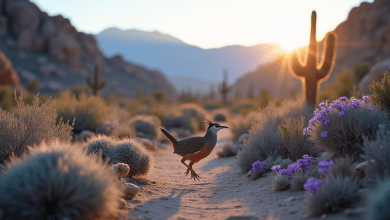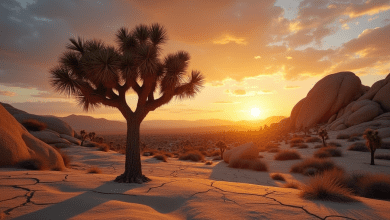Encountering Snakes in Joshua Tree National Park: Essential Tips for Safety and Prevention

What To Do If You Encounter a Snake in Joshua Tree National Park
Introduction
Joshua Tree National Park, with its mysterious rock formations and unique desert landscape, is a haven for outdoor enthusiasts and nature lovers. However, with the beauty of nature comes a few challenges – one of the most common being snake encounters. If you’re planning a trip to this iconic park, it’s essential to know how to handle a snake encounter safely. This article provides valuable insights on what to do when you come across a snake while exploring the wonders of Joshua Tree.
Understanding the Snakes of Joshua Tree National Park
Joshua Tree is home to various snake species, some of which are harmless while others can be venomous. The two primary types you may encounter are:
Rattlesnakes
Rattlesnakes are perhaps the most well-known snakes in the park, recognizable by their rattle at the tail end. They typically come out during warmer months and can be found basking in the sun on rocks or trails.
Non-Venomous Snakes
There are also several non-venomous snakes, such as gopher snakes and king snakes, which often resemble rattlesnakes but lack the rattle. These snakes play a critical role in the desert ecosystem and should be treated with respect.
Stay Calm and Assess the Situation
1. Don’t Panic
The first thing to remember if you encounter a snake is to remain calm. Snakes typically are not aggressive unless they feel threatened. A sudden movement or loud noise might provoke them to strike.
2. Observe from a Distance
If you see a snake, take a moment to stay still and observe it from a safe distance. This not only keeps you safe but also allows you to identify whether the snake is venomous or not. Maintain a distance of at least six feet.
Safe Approaches to Snake Encounters
3. Back Away Slowly
If the snake is on your path, the best action is to back away slowly and give it space. Most snakes will move away on their own if they sense no threat. Do not attempt to touch or provoke the snake in any way.
4. Give It Space to Escape
If the snake does not leave the area, wait patiently. In many cases, snakes will slither off after a while once they feel the area is safe again.
5. Take Alternate Routes
If you must continue your hike and the snake remains in your path, look for alternative routes or areas to navigate safely.
What NOT to Do When Confronted by a Snake
6. Do Not Attempt to Handle or Kill the Snake
Handling a snake can lead to bites, especially if the snake feels threatened. It’s important to remember that these creatures are vital for maintaining the ecological balance in Joshua Tree and should be treated with respect.
7. Avoid Loud Noises or Sudden Movements
Loud noises and quick movements may agitate the snake and increase the likelihood of a strike. Stay calm and collected in your actions.
First Aid for Snake Bites
Although rare, bites can happen. If you or someone in your party is bitten:
8. Remain Calm
Try to keep the affected area still to slow the spread of venom.
9. Seek Medical Attention Immediately
Call for help or head to the nearest hospital. Identify the snake if possible, as this will help medical professionals understand the best course of treatment.
10. Avoid Folk Remedies
Do not use ice, tourniquets, or suction to remove venom. Instead, focus on getting professional medical help.
Final Words of Advice
Before you embark on your adventure in Joshua Tree National Park, educate yourself on the local wildlife, and embrace the wilderness with awareness and respect. Always carry essentials such as a first-aid kit, plenty of water, and good hiking shoes to ensure a safe experience. Remember, snakes are a natural part of the environment, and by understanding how to react during encounters, you can enjoy your visit to the park without fear.
Conclusion
Experiencing nature at its finest is one of the joys of visiting Joshua Tree National Park. By taking the necessary precautions and knowing how to react to a snake encounter, you can ensure a safe and enjoyable trip. Keep this guide handy, and don’t let a snake sighting ruin your adventure; instead, consider it a fascinating aspect of the vibrant desert ecosystem that thrives in Joshua Tree. Happy hiking!




